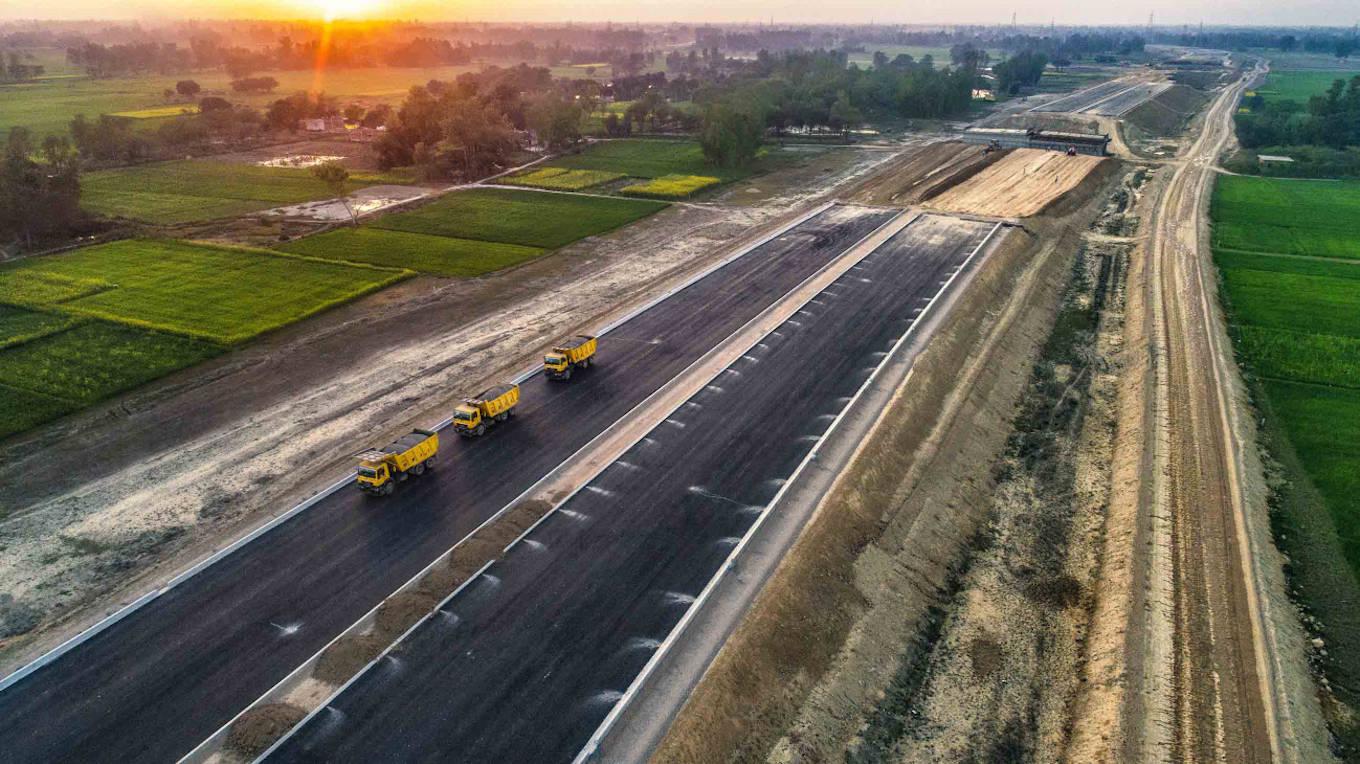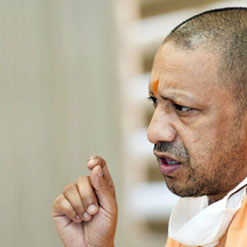Experts have also pointed to unreliable Covid reporting systems in the north. Gagandeep Kang, the famous virologist, said: “One needs to ask, how good the reporting systems in the states showing a sharp fall in cases are. Certainly, the states that have relatively better healthcare systems, like those in the south, have a better reporting system.” Besides, different variants of the virus could be in circulation in different places. Also, prior exposure to the virus, which would determine seropositivity, also needs to be looked at.
If one goes by optics alone, the situation in UP was indeed bad. Disturbing images of overcrowded hospitals turning away patients, relatives of patients at their wit’s end because of oxygen scarcity, funeral pyres burning round the clock at cremation grounds and bodies floating in the Ganges made national headlines. Indeed, the horror tales of the devastation wrought by the pandemic are still pouring in, like that of a family in Imaliya village on the outskirts of the state capital of Lucknow, which lost eight members to Covid-19 between 22 April and 15 May. The Allahabad high court was constrained to remark that health services in the state were ‘Ram bharose’ (at God’s mercy). There was a sudden dent in Yogi’s image.
But it wasn’t like that before the second wave came. Some political observers had begun to see Yogi as a possible successor in the BJP to Narendra Modi. In fact, as observers have noted, there is a striking similarity in the style of working of Modi and Yogi: both have a centralised system of working and run governments welded to the image of the leader. Indeed, like Modi who set a target of making India a $5-trillion economy by 2025, Yogi conjured up the goal of making UP a $1-trillion economy in five years (2020-2025).
No more BIMARU?
“The growing interest of investors, MNCs, the rising per capita income, the state’s economic positioning in the country and infrastructural development – all point towards a new, better developed Uttar Pradesh. Since coming to power in 2017, we have constantly and consistently worked towards the development of our state and its citizens and have transformed the state which was once referred as BIMARU into an economic powerhouse,” says Sidharth Nath Singh, Minister, (MSME, investment and export) UP.
Of late, Yogi has been positioning himself as a strong administrator determined to change the face of UP and get the state’s sluggish economy going. “The growing interest of investors, MNCs, the rising per capita income, the state’s economic positioning in the country and infrastructural development – all point towards a new, better developed Uttar Pradesh. Since coming to power in 2017, we have constantly and consistently worked towards the development of our state and its citizens and have transformed the state which was once referred as BIMARU into an economic powerhouse,” Yogi told Business India. For a long-time UP had been dubbed part of the BIMARU club. In Hindi, BIMARU, the acronym for Bihar-Madhya Pradesh-Rajasthan-Uttar Pradesh, translates into sick, which has a negative connotation. “Not anymore,” asserts Yogi.
Amidst the pandemic, when the global economy had slowed down in 2020-21, the state government claims to have attracted more than 77 investment proposals, including those from companies from around 10 countries such as Japan, the US, the UK, Canada, Germany, South Korea and Singapore, worth around R57,000 crore. In all, he claimed in his latest interview to the Economic Times, that more than R3 lakh crore had been invested in the state during the past four years
-
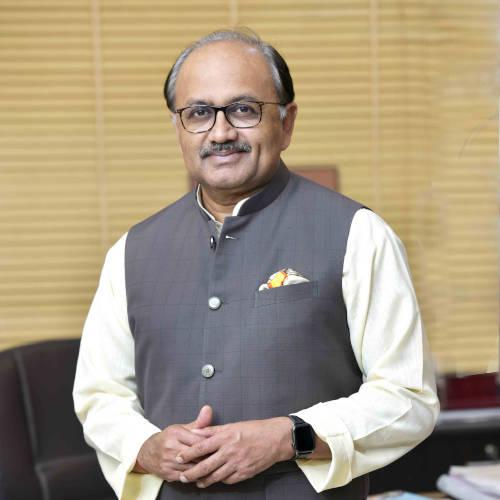
Singh: the growing interest of investors
Cashing in on UP’s new found importance, Yogi has been thinking big. He is building spanking new international airports, led by the showpiece effort in Jewar, off Noida. He wants to give competition to Mumbai in film production by establishing a film city over 1,000 acres next to the Jewar airport. Two years after Modi laid the foundation for the ambitious defence industrial production corridor spanning east and central UP, the state government is trying to get the project off the ground by allotting land to 17 companies for the setting up of their manufacturing units.
A number of expressway projects criss-crossing the state are in various stages of construction. A mega leather park and leather cluster project have been conceptualised near Kanpur. A GIS-mapped land bank has been created and plots are being handed out to investors at preferential rates. It’s a different story that the pace of progress on some of these projects has been slow.
Political journey
Yogi was born Ajay Mohan Bisht in Pauri Garhwal, Uttarakhand. After completing his BSc in maths, he left home to become a disciple of Mahant Avaidyanath, the chief of the Gorakhnath Math, an important centre of Hindu Vedic culture in Gorakhpur. He was given the name ‘Yogi Adityanath’ and designated as the successor of Avaidyanath who had been co-opted into the BJP and represented Gorakhpur in the Lok Sabha twice at the height of the Ram temple movement. When the Mahant passed away, Yogi took his place in politics and represented Gorakhpur five times in Parliament. During this period, he founded the Hindu Yuva Vahini, an organisation which attracted religious-minded young people.
In 2017, he was Prime Minister Narendra Modi and then BJP President Amit Shah’s surprise choice for the chief minister’s job after the BJP trumped a divided Samajwadi Party in the elections. There are reports that he was handpicked by the Rashtriya Swayamsevak Sangh (RSS) because of his strong religious beliefs. The RSS indicated to Modi and Shah that they should select a CM with a strong Hindutva background, a clean image and one who could fix things in UP. With the then home minister, Rajnath Singh, a former CM, reluctant to go back to UP, it was felt that Yogi was the right man for the job.
As he took over the reins of the government in Lucknow, his staunch Hindu supporters rejoiced. The appointment was also welcomed by a section of UP’s populace which was tired of caste-identity based parties, the dynastic successions in state’s politics and decades of decline and lawlessness. The state’s Muslims, however, quivered in trepidation, given the role of the Hindu Yuva Vahini in fomenting tensions and Yogi’s own fiery speeches.
Yogi’s daunting task
While the Modi-led campaign in the 2017 assembly election galvanised public opinion in favour of the BJP, Yogi, on assuming office, was faced with the daunting task of rebuilding the image of UP as a state with ease-of-governance. By the time Akhilesh Yadav completed his term, anti-incumbency had set in. In his first speech after assuming power in March 2017, Yogi identified brain drain as a problem as businessmen and young people were moving out of the state.
“Besides, farmers were sullen over unremunerative prices and delayed payments, the law-and-order situation was far from satisfactory, with women in particular not feeling safe because of the rising graph of crimes against them, and even anganwadi workers were up in arms. Seeking the people’s support, he promised a corruption-free government and an end to goonda raj (rule of criminals),” says Suresh Rana, minister (sugar industry). “The results are now in front of you,” Yogi says.
-
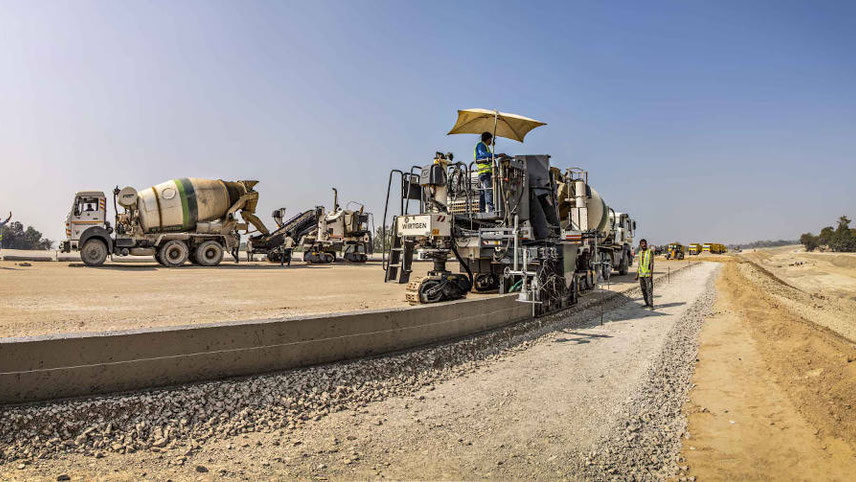
Highway project gets going
Yogi came to his new job without any experience but began learning the ropes fast. However, to handle a state like UP, one needs to negotiate many political pitfalls. With rivals like Akhilesh Yadav and Mayawati licking their wounds and waiting to have a go at him, and newbie Priyanka Gandhi keen to earn her spurs, incidents, however small, tend to get blown up. Part of the problem also lies in his attempts to project a tough-guy image.
For instance, when he gave the state’s police force carte blanche to go after unlawful elements with the words “jo apradh karenge, thok diye jayenge’ (whoever commits a crime will be knocked off), there were incidents of police excesses and ‘encounters’. His religious bent emboldened the wayward saffron cow vigilantes to engage in grisly mob lynching. There were cases of atrocities against Dalits and allegations of caste bias against him. His government has threatened to use the National Security Act and Gangsters Act to browbeat its critics in social media. His government has also ordered protestors to pay damages, or face seizure of their property, for engaging in acts of vandalism.
On different occasions, the higher judiciary has come to the defence of those targeted by the Yogi government. It started from the time when both the Allahabad High Court and Supreme Court struck down the Lucknow administration’s move to ‘name and shame’ the anti-Citizenship Amendment Act protesters against whom recovery notices had been sent, by outing them on public hoardings.
But it goes to Yogi’s credit that he managed to deflect most controversies. His clean image helped; indeed, not a single charge of corruption has been levelled against him. The defence mounted by his supporters is that the problems of UP are not as simple as those of smaller states and require a tougher approach. UP is so large that if it was a separate country, it would be the fifth largest by population in the world, just behind China, India, US and Indonesia. “UP contributed 8 per cent to India’s GDP,” says Navneet Seghal, additional chief secretary, UP.
Pandemic woes
However, the political clout UP wields brought little immediate relief as the second wave of the pandemic engulfed the state, exposing its creaky health infrastructure. The political importance of how the second wave of the pandemic pans out in UP and whether the state can effectively handle a third wave is underscored by sheer proximity of the next assembly election in February-March 2022. The outcome of the assembly election will impact the BJP’s performance in 80 Lok Sabha seats during 2024. The 80 seats include that of Prime Minister Modi who, though from Gujarat, has contested twice from Varanasi. That’s why Yogi is the man in the hot seat.
After the pandemic broke out, several BJP ministers, MPs and MLAs openly claimed shortcomings in the response by the leadership amid calls for help by the people. The people’s disenchantment was reflected in the zila panchayat elections held in the middle of the pandemic, which the BJP itself had billed as a ‘semi-final’ to the assembly poll. The candidates supported by the BJP fared poorly, even in important party strongholds like Varanasi, Ayodhya and Mathura. “The political importance of how the second wave of the pandemic pans out in UP and whether the state can effectively handle a third wave is underscored by sheer proximity of the next assembly election in February”, says Satish Mahana, industrial development minister, UP.
-
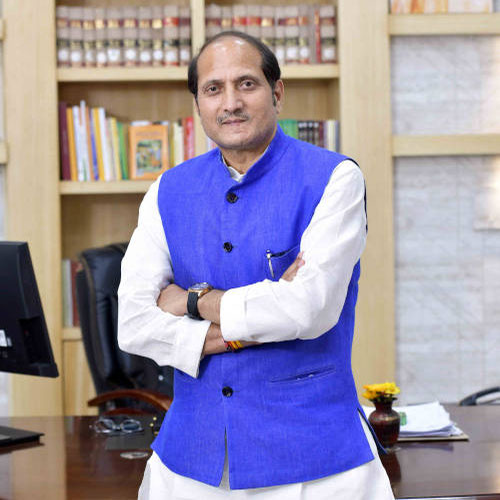
Rana: corruption-free government
Much was made out of the BJP central leadership’s decision to send BL Santhosh, the party’s national general secretary, to Lucknow, to take stock of the situation. The recent visit was preceded by that of Dattatreya Hosabale, the powerful sarkaryavah (general secretary) of the RSS. Santhosh and Hosabale met the state BJP and RSS functionaries respectively. The feedback they got was that situation was bad in April and the state government was not even responding to SOSs but from mid-May, things were getting better. On the whole, the UP government’s image had been dented.
Given the larger-than-life image of Yogi and the fact that the state is going to elections in less than a year, it is almost impossible that he will be replaced. But senior state BJP leaders and ministers who have been side-lined by Yogi may get more prominence now. A cabinet reshuffle also appears imminent. There is also talk of a retired bureaucrat, Arvind Kumar Sharma, an IAS officer of Gujarat cadre who worked in the CM’s Office during Modi’s reign in Gujarat and handled the MSMEs ministry at the centre, joining the UP government. Sharma has already been nominated to the UP Legislative Council and looks after matters pertaining to Modi’s constituency.
UP’s economy
“Apart from the pandemic, the drift in the state’s economy also remains an area of concern. Traditionally, UP has contributed about 8 per cent to India’s GDP. But it has never been an industrial powerhouse like Maharashtra or Tamil Nadu”, says Navneet Seghal, additional chief secretary, UP.
In the coming months, once the intensity of the pandemic abates, one may see a concerted push to realising the commitments of private investments that have been made in the investor summits. Yogi was expected to turn the state’s economy around. But did that happen? The Samajwadi Party has repeatedly criticised the state government for only continuing what it started. Akhilesh Yadav speaks of achievements in his career – the Agra-Lucknow expressway, the Purvanchal (Lucknow-Ghazipur) Expressway, the Lucknow Metro, high-yielding animal dairy farms, the distribution of free laptops to students, changes in the tourism policy (that catapulted UP to the third place in tourist arrivals) and big-ticket investments like the one with furniture giant IKEA.
To be fair to Yogi, he has not nixed any of Akhilesh’s projects. Prashant Trivedi, associate professor, Giri Institute of Development Studies, Lucknow, says this is a positive development which will change the perception of the state. “There has been continuity in development projects such as the Metro Rail and the Purvanchal expressway. Governments have a tendency to discontinue the good work of their political opponents.”
But has Yogi delivered on his own? It would seem that in the second half of Akhilesh’s term, UP had broken out of its stagnation. Its GSDP (gross state domestic product) grew at the rate of 8.85 per cent in 2015-16 and 10.87 per cent in 2016-17. Yogi took over in early March 2017, just ahead of the new financial year. The growth rate under Yogi over the next three years did not keep pace with the momentum – 7.24 per cent in 2017-18, 5.33 in 2018-19, and 4.38 per cent in 2019-2020. In fact, the state’s growth halved under his three years from what he had inherited.
A worried Yogi government then thought of appointing a consultant to chalk out a roadmap to boost the GSDP and received eight bids for it. It even invited technical bids for presentation. But in April this year, the global bids were cancelled owing to ‘technical reasons’. The process of bidding will now be started afresh.
-
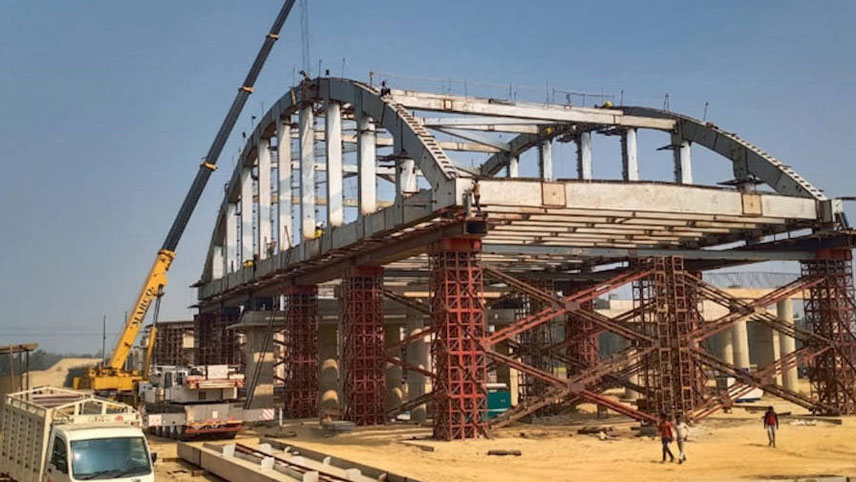
Infrastructure gets a boost
All eyes are now on the size of the state’s economy; the figure will be released in the coming weeks. However, advance estimates of the state’s income have indicated this has been adversely impacted by Covid-19. It shows an estimated contraction of 6.4 per cent in GSDP in 2020-2021. The state may thus have to mobilise additional resources to keep itself afloat. In fact, its task of mobilising additional resources will become even more challenging as the Yogi government will need additional funds to complete various development projects before UP goes into poll mode (by end of 2021). Yashvir Tyagi, former professor, department of economics, Lucknow University, points out that this is bound to have an adverse impact on the state government’s goal of making the state a trillion-dollar economy in five years.
Manufacturing down, employment up
“What is more worrisome is the fact that the state’s manufacturing sector has consecutively witnessed a negative growth rate of -3.5 per cent (2019-2020) and -5.4 per cent (2020-2021). The agriculture sector is the only bright spot which witnessed a healthy growth of 6.2 per cent in 2020-2021,” said Tyagi. This explains why Yogi has been on overdrive in the past two years, holding road shows to attract investment to his state and get the economy going.
In March, however, Yogi had reasons to cheer when a Centre for Monitoring Indian Economy (CMIE) report said that the unemployment rate in the state had dipped to 4.1 per cent during the month of February from almost 21 per cent in 2000. This was due to a series of steps to reactivate the MSMEs sector, the biggest provider of jobs, like the One District-One Product (ODOP) scheme and the revival of traditional industries by providing loans on easy terms. Simultaneously, the UP Labour (Employment Exchange and Job) Commission was set up to liaise with industrial units and provide jobs for migrant workers as per their skill and employment opportunities.
On sustainable development goals (SDGs), UP’s record has been lacklustre. In the latest third edition of the SDG India Index, developed by Niti Aayog in collaboration with the United Nations to track the progress of all states and UTs, UP finds mention in only one of the 15 goals – sustainable and clean energy.
Priority Farmers
Farmers are the backbone of UP’s economy. About 58 per cent of the population is dependent on the agriculture sector but agriculture and the allied sectors contribute only 26 per cent to the GSDP. Hence, says Yogi, “Our focus was to increase agricultural production in the state and to give the farmers a fair price for their crops via farmer-friendly policies. The first thing we did after coming to power was to waive off farmers’ debts worth Rs36,000 crore. In the previous government, farmers had suffered immensely in terms of availability of credit and procurement of crops. We have steadily increased the minimum support price and made record purchases of food grains. Apart from wheat and paddy, farmers are getting better prices in the market due to government procurement of maize, pulses and oilseeds. Over Rs66,000 crore was paid to the farmers. In order to empower farmers economically, the underlying causes were addressed by our government.”
Despite the lockdown, sugarcane crushing continued in 119 sugar mills. Arrears of Rs5,954 crore due to sugar mills were cleared. Over 47 lakh sugarcane farmers were paid a record cane price payment of more than Rs1,27,000 crore between 2017-2020. Besides, 20 defunct sugar mills were revived and plants for manufacturing sulphur-free sugar at Munderwa and Pipraich sugar mills located in Basti and Gorakhpur districts respectively were inaugurated.
-
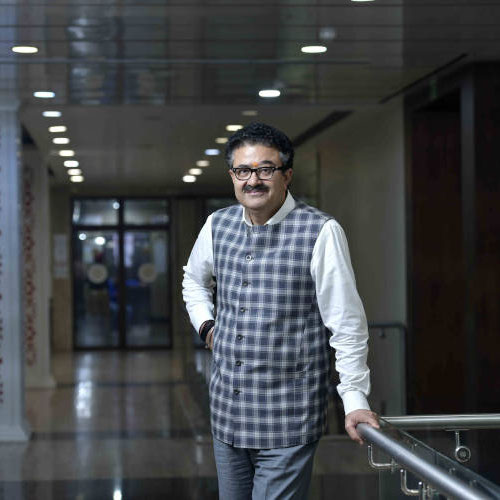
Seghal: UP contributed 8 per cent to GDP
Yet the famers of western UP could prove to be a tough nut to crack politically. This is because of their strong opposition to the new farm laws brought in by the Modi government. The Samyukt Kisan Morcha (SKM), an umbrella organisation with over 500 farmers’ organisations, which is coordinating the protests, has threatened to hold mahapanchayats across the state with anti-BJP slogans ahead of the 2022 assembly elections.
Size matters. UP is the second largest state in terms of geography and of course the most populous one; its infrastructural gaps are also large and they need large solutions. The Yogi government claims that underdeveloped regions were given infrastructure development projects such as the Purvanchal Expressway (340.82 km), Bundelkhand Expressway (296.070 km) and Ganga Expressway (596.00 km). Before 2017, only two cities in the state were connected to the air grid. His government has pushed the union civil aviation ministry to add seven cities to the air grid in the past three years and is working on building 12 new airports. The work to initiate construction work on metros is in progress in cities like Kanpur and Agra.
The showpiece of Yogi’s big moves in infrastructure was to be the Noida Greenfield International Airport at Jewar in Greater Noida, billed as the fourth largest airport in the world. The UP Government signed a concessionaire agreement with Yamuna International Airport Ltd, the SPV of Zurich Airport International AG, to build the airport in three phases, over 5,000 hectares. Jewar airport will operate as a fully digital airport, providing a safe and contactless travel experience and customised commercial offerings for passengers and will be the first net-zero emissions airport in its class, setting a new standard for sustainable aviation, as per an official statement. To be developed as a Public-Private Partnership (PPP), it is expected to commence its operation of phase-I in 2024 with two runways spread over an area of 3,300 acres.
The Yogi government will have to race against time to achieve that deadline. The construction work for the project has been stalled due to the two successive waves of Covid-19 and land acquisition problems. Even the foundation stone laying ceremony has not yet been held. The state government is now hoping to start construction before the upcoming state assembly election early next year.
Wooing investors
Like any other state, UP too drew substantial attention with its Investors’ Summit in 2018 with ‘investment commitments’ running into lakhs of crores. Yogi says that the summit, along with other efforts “brought global investment and infrastructure development to UP without creating any regional imbalance. Projects worth almost Rs3 lakh crore have been grounded in the past four years.” The actual conversion of the MoUs signed on the occasion into projects on the ground, however, has been less than impressive. In February last year, UP’s industrial development minister Satish Mahana told the assembly that just 90 out of the 1,045 projects intended to be developed during the Investors Summit had started commercial production, putting on the ground investment of about Rs39,000 crore.
Yet there have been standout achievements. These include the South Korean tech giant Samsung which is moving its mobile and IT display production unit from China to Noida and is making an investment of Rs4,825 crore there. The unit is expected to generate direct employment for 510 people, apart from indirect employment.
-
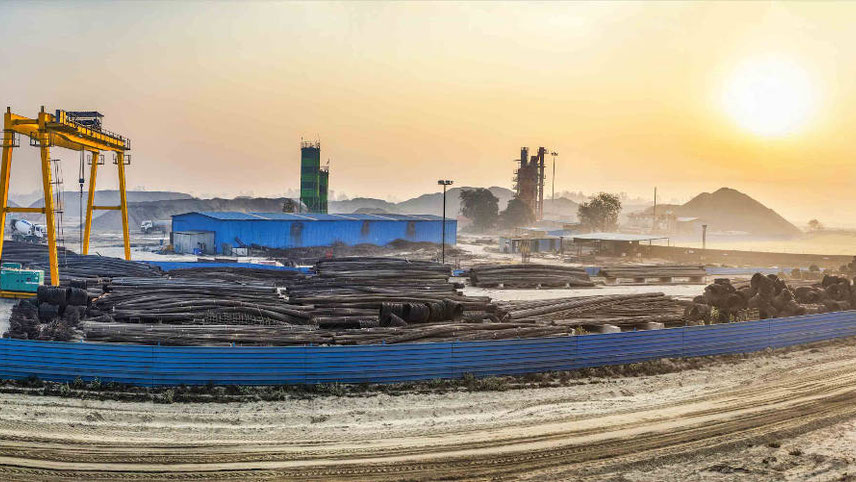
Road to the $1-trillion economy
“Our Noida factory, the world’s largest mobile factory, is a symbol of Samsung’s strong commitment to India, and a shining example of the success of the ‘Make in India’ programme,” says HC Hong, Chief Executive Officer, Samsung India. “We plan to make India a global export hub for mobile phones supported by a large ecosystem of suppliers in the National Capital Region and partners across the country. All Samsung mobile phones, including the flagship Galaxy S9, S9+ and Galaxy Note8, are made at the Noida plant.”
The Noida-Greater Noida region contributes over 10 per cent to India’s GDP and has a huge concentration of enterprises and start-ups which need reliable data centre services. IT companies working in UP and elsewhere are excited by the prospect of this first-of-its-kind data centre park in Noida equipped with state-of-the-art technology and facilities. Since the power consumption for the data centre is very high, the Yogi government will provide open access to power to the facility.
The Hiranandani Group, Mumbai’s real estate developer, which has built data centres in Mumbai, Chennai and Hyderabad, was among those who spotted the potential of Noida. It has made an investment of over Rs600 crore in the centre. Further, Yotta Infrastructure, another Hiranandani group firm, has also received approval from the UP government to set up a 20-acre data centre park in Greater Noida. Group co-founder Niranjan Hiranandani says: “Yotta Infrastructure’s vision to support the Digital India initiative just received a big boost with the inclusion of our Northern India campus that will enable us to address India’s growing need for data sovereignty.”
Mumbai road show
In December 2020, Yogi attended the gong ceremony at the Bombay Stock Exchange for listing the Rs200 crore Lucknow Municipal Corporation (LMC) bond, a first of its kind for the entire northern region. The LMC bond has an AA rating by India Ratings and AA (CE) by Brickworks Rating. It was launched on 13 November, was oversubscribed 4.5 times and closed at 8.5 per cent coupon rate for 10 years, which makes it the second lowest rate of all the municipal bonds launched till today. The funds raised through the bond will be invested in various infrastructure schemes in the state capital, including water supply and housing.
During the Mumbai visit, Yogi invited well-known industrialists to invest in UP and explained to them about the large-scale infrastructure development done in the state. He met several business and industry captains such as N Chandrasekaran, Chairman, Tata Sons, Dr Niranjan Hiranandani, CMD, Hiranandani Group, Sanjay Nayar, Partner & CEO, KKR India Advisors Private Ltd, Suprakash Chaudhuri, Vice President & MD, Siemens Industry Software, SN Subrahmanyan, CEO & MD, L&T and Baba Kalyani, Chairman, Kalyani Group. During these meetings, Tata Sons agreed to invest in end-to-end electronics manufacturing in the upcoming Electronics City planned near Jewar Airport.
Law and order holds the key
After taking over, Yogi was quick to realise that he had to rid UP of the reputation of being a lawless state as a precursor to inviting investments. “From the beginning, we started working towards establishing the rule of law so that the people could live without fear of danger to their life and limb and the change in environment could bring in investors,” he points out.
The government tightened the noose around illegal mining, the land mafia, and shut down the unauthorised slaughterhouses and tanneries polluting the rivers. Critics concede that the strong-arm methods have led to a drop in crime rates – while dacoity cases were down by 59.70 per cent in 2019 as compared to 2016, murder cases have declined by 47.09 per cent in the same period. The all-India rate of crime against women in 2019 was 62.4 cases per one lakh population while UP recorded 55.4 cases per lakh.
-
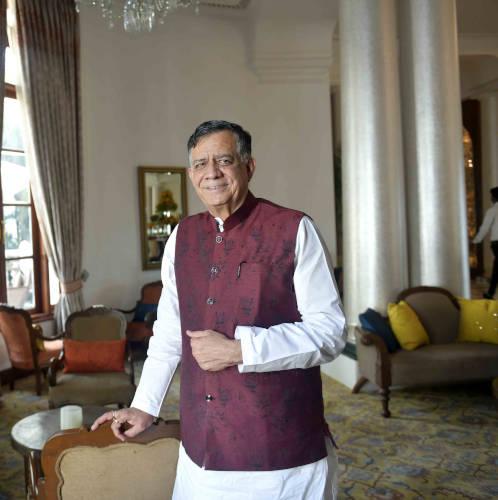
Mahana: can handle the third wave, effectively
For better policing, 41 new police stations and 13 new check posts were established in the state and 1.37 lakh police personnel were recruited. The police commissioner system has been implemented in Lucknow and Gautam Budh Nagar.
While the state’s 20 per cent Muslim population remains sullen, there had been no incidents of violence at the time of the abrogation of Article 370 of the Constitution of India or when the court verdict on Sri Ram Janmabhoomi dispute came out. Of course, there were protests against the Citizenship Amendment Act, but these were quelled, albeit through strong-arm methods.
Ease of doing business
In wooing businessmen to UP, Yogi inevitably refers to the quantum jump in the state’s ease of doing business ranking. In the Business Reform Action Plan ranking of states by Department for Promotion of Industry and Internal Trade (DPIIT), UP bagged the second position – a jump of 12 positions in the last three years. Andhra Pradesh and Telangana are on top.
The state has implemented a record 186 reforms spread across multiple areas such as labour regulation, inspection regulations, land allotment property registration, environmental clearances, paying taxes, etc. In order to reduce the regulatory burden, UP started an exercise to identify and simplify licenses/NOCs (no objection certificates) in terms of renewals, inspections and registers & records, filings/returns, display requirements.
The state launched Nivesh Mitra, which it describes as one of India’s largest digital single window portals, providing around 166 services to entrepreneurs. With an average NoC application disposal rate of 93 per cent, the Nivesh Mitra portal has successfully achieved an outstanding query resolution rate of 98 per cent. In recent months, the Industrial Development Authorities have allotted nearly 426 acres of land (326 plots) for projects with an investment size of around Rs6,700 crore and employment generation potential of nearly 1,35,362 people. This includes allotments to major investors such Surya Global, Hindustan Unilever MG Capsules and Kesho Packaging.
With private investors showing interest, uninterrupted supply of power has become a priority. The state government has been putting in efforts at streamlining power generation, transmission and distribution in the past four years. The transmission capacity alone has also seen an augmentation of 63 per cent. The government’s policy of ‘power to the people’ has led to an increase in the number of registered consumers from 1.8 crore in 2017 to 2.93 crore in 2020. Over 1.21 lakh villages have been electrified.
What lies ahead?
Yogi exudes confidence about being back in power next year. He says now that the development activities have been rolled out at a fast pace, he is hopeful that in his second term, UP can look to consolidate the gains of the recent past and embark on a quantum jump of growth. “UP is on the path to achieve the $1-trillion economy target. From a state GDP of R10.90 lakh crore in 2015-16, we succeeded in increasing the GDP size to Rs19.48 lakh crore. We will continue to move towards our goal of bolstering PM Modi’s vision of making India a global economic power.”
-
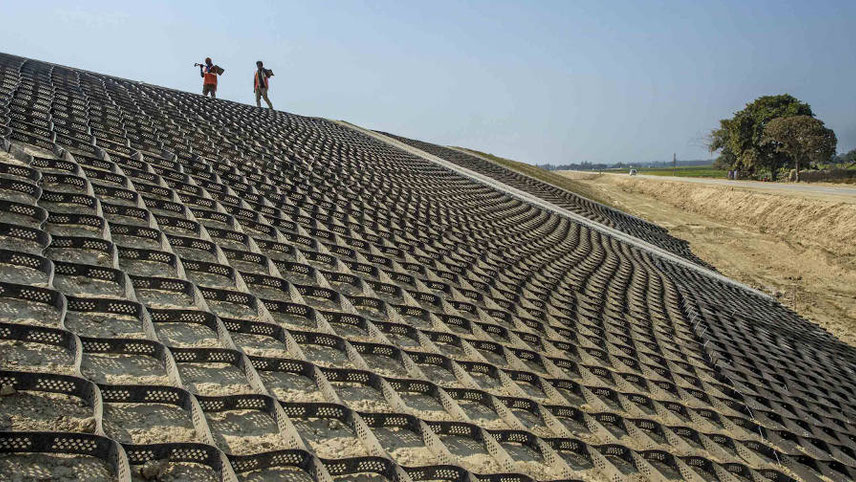
Brighter days are ahead for the state's solar energy sector
Covid-19 has been a testing time for Yogi and UP. While it has brought out the fault-lines in his government, it also showed him as a leader capable of tackling a challenge head-on. The apparent success of his multipronged strategy – containment of virus, treatment of infected persons, more testing, employment to returnee migrants, taking care of the weaker sections – has provided him with an electoral plank to approach voters.
On 30 May, as the state registered 1,900 cases and the active case load was just 41,000, Yogi declared: “We have the lowest fatality rate in the country, lowest positivity and highest recovery rate.” Even before he made this claim, approval of the state’s performance came from none other than Modi: “The vast preparations made by the CM saved at least 85,000 lives, something unthinkable before 2017.”
But will such claims be enough to gloss over the fault-lines and assuage the hurt of the people who have lost their loved ones? Can Yogi actually convince voters that he is set to economically transform UP and their best bet lies in backing him for a second term? The coming months will no doubt see the seer-turned-politician barnstorm the state to win over its people. In this, he will surely get a helping hand from Modi and can rely on the munificence of the centre. But will the voters be convinced?
UP-watchers say that for Yogi, the political landscape ahead offers only two choices – a bad result will mean a downgrading of his status in the BJP’s scheme of things; a strong result could bring him even bigger stature in his party.
